
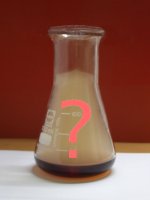

Riddle: Dissolving molybdenum in HNO3
When finely powdered and very pure molybdenum metal is added to moderately concentrated nitric acid (50% to 60%), then a vigorous reaction starts in which NO2 is produced. The solution, however, does not become clear, but a red finely powdered precipitate is formed. This finely powdered precipitate does not dissolve in fresh concentrated nitric acid. Apparently, this is the end product of oxidizing molybdenum metal by nitric acid.
The question is: What is the red solid, formed by oxidation of molybdenum metal by nitric acid?
![]()
![]() Required
chemicals:
Required
chemicals:
-
molybdenum powder, high purity
-
nitric acid, 50% .. 65%
-
sodium hydroxide
-
hydrogen peroxide
![]() Required
equipment:
Required
equipment:
-
test tubes
-
means of heating a test tube (e.g. alcohol burner or bunsen burner)
![]() Safety:
Safety:
-
Some NO2 is formed in this experiment. Avoid inhalation of this gas, it is very toxic. The amount produced in this experiment is quite small, but in order to be on the safe side it is recommended to perform this experiment only in a good fume hood or outside!
-
Concentrated nitric acid is very corrosive.
-
Sodium hydroxide is very corrosive.
![]() Disposal:
Disposal:
-
The molybdenum waste should be disposed of in a proper way. Bring it to a waste processing facility, capable of handling heavy metal waste.
![]()
Preparation of the red precipitate
Put a small spatula full of powdered molybdenum metal in a test tube and then add a few ml of moderately concentrated nitric acid. The concentration may be anything from 50% to 65%.
As soon as the acid is added, a vigorous reaction starts, in which some brown NO2 is formed. The solution becomes deep red/brown. At first glance, it looks as it is a clear solution, but when all bubbling has ceased, then one can clearly see that the solution is not clear, but a finely powdered solid is dispersed in the liquid.
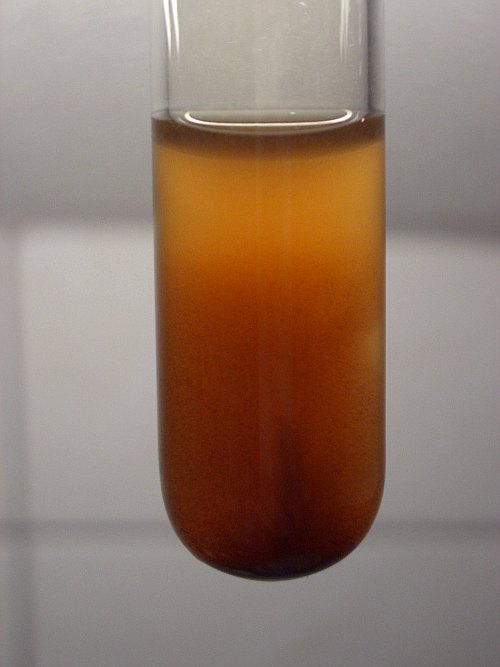
When the liquid is allowed to stand for an hour, then most of the solid has settled already and a light brown/red liquid remains. The liquid, however, is not a solution, but contains very fine particles.
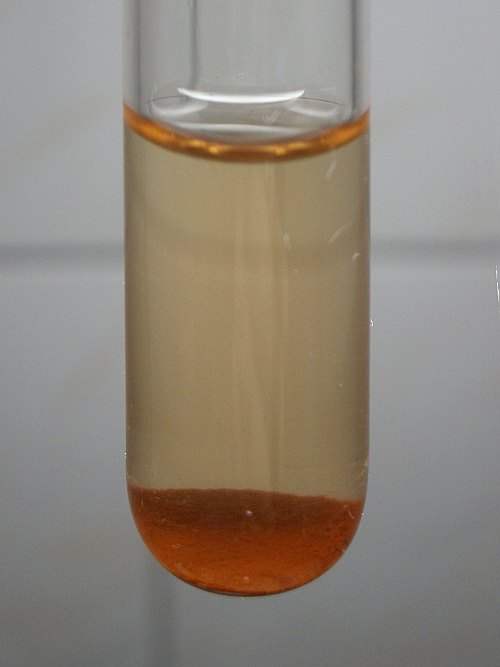
It takes a lot of time, before all of the solid has settled at the bottom. After 48 hours, the liquid above the precipitate is (almost) colorless. The precipitate itself resembles rust, it is a little bit more red though.
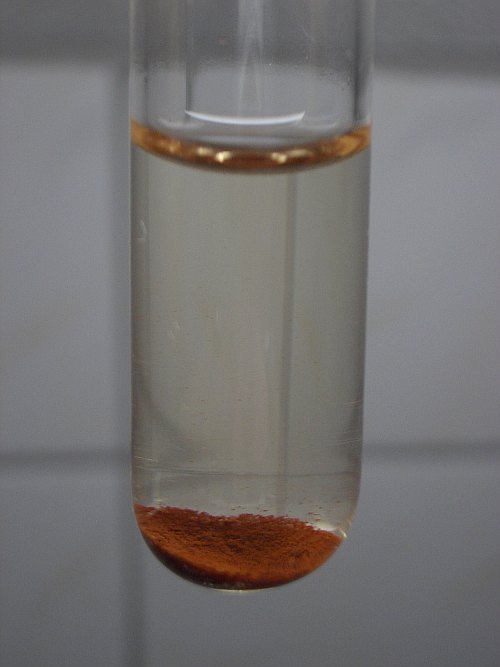
![]()
Some properties of the precipitate
The precipitate does not dissolve in water. It also does not dissolve in concentrated nitric acid, not even in hot concentrated nitric acid. The precipitate also does not dissolve in a solution of sodium hydroxide.
When hydrogen peroxide is added, then the precipitate does dissolve, both in alkaline and in acidic environments.
It is known from literature, that molybdenum(VI) compounds form peroxo complexes with hydrogen peroxide. In alkaline solution, a yellow peroxo complex is formed, and in acidic solution, a brown/red peroxo complex is formed.
These complexes also are formed from the precipitate. Apparently, the hydrogen peroxide first oxidizes the precipitate (if it needs to be oxidized, assuming it has oxidation state less than +6) and then complexes it.
![]() A yellow solution is formed, when the precipitate is
dispersed in a solution of sodium hydroxide, to which some hydrogen peroxide is
added.
A yellow solution is formed, when the precipitate is
dispersed in a solution of sodium hydroxide, to which some hydrogen peroxide is
added.
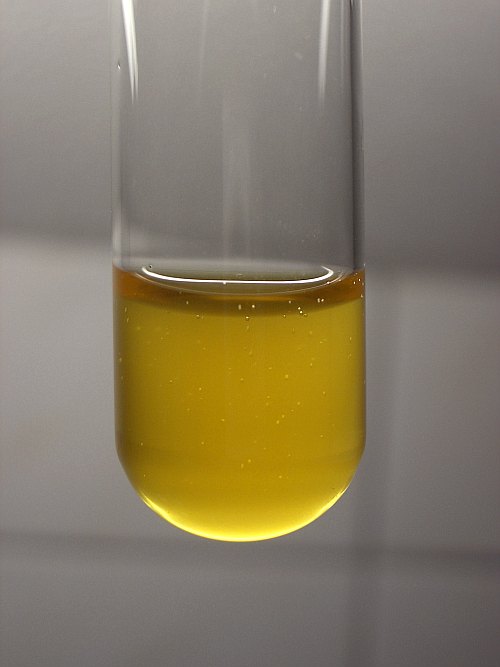
![]() A
red/brown clear solution is formed, when the red precipitate is dispersed in
some dilute nitric acid and then some hydrogen peroxide is added. The
precipitate quickly dissolves and a clear red/brown solution is obtained. This
solution decomposes, there is a fairly vigorous production of oxygen from this
solution, and it slowly becomes lighter.
A
red/brown clear solution is formed, when the red precipitate is dispersed in
some dilute nitric acid and then some hydrogen peroxide is added. The
precipitate quickly dissolves and a clear red/brown solution is obtained. This
solution decomposes, there is a fairly vigorous production of oxygen from this
solution, and it slowly becomes lighter.
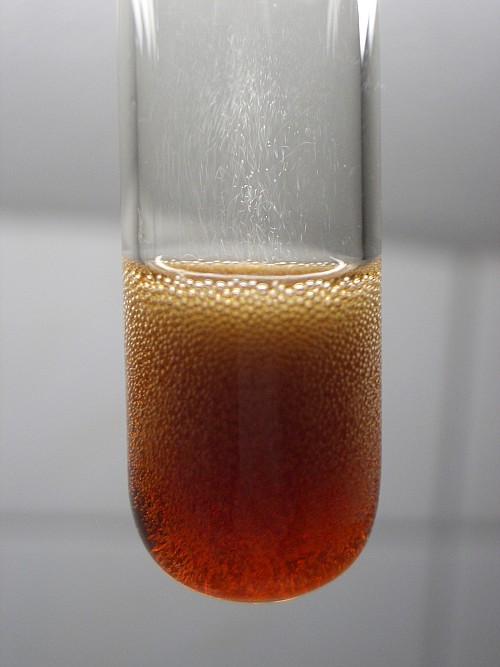
![]()
Discussion of the results
It was expected that adding molybdenum metal to nitric acid would result in formation of white hydrous MoO3, or a clear solution of molybdic acid. Instead of this, a red precipitate is formed.
The red/brown precipitate is some molybdenum compound, which with hydrogen peroxide gives solutions, similar to those, obtained from plain molybdate. It, however, is not a simple molybdate.